What is an AI robot and how does it work?

What is an AI Robot and How Does It Work?
#An Artificial Intelligence Robot (AI Robot) is a combination of two key technologies: Artificial Intelligence (AI) and Robotics.
AI enables machines to perform tasks that typically require human intelligence, such as learning, reasoning, problem-solving, and language understanding.
Robotics deals with the design, construction, operation, and application of robots.
When these two technologies are combined, the result is an intelligent robot that can interact with its environment, make decisions, and perform tasks without the need for direct human intervention.
Briefly, an AI robot works as follows: sensors collect information from the environment, this information is processed by AI algorithms, decisions are made, and finally, actuators execute commands.
For example, a smart robot working in a warehouse can use its cameras and sensors to scan the surrounding environment, use machine vision algorithms to identify objects, use routing algorithms to find the best path to its destination, and use its motors and arms to move objects.
AI robots are used in various industries, including manufacturing, healthcare, agriculture, logistics, and customer service.
These robots can increase productivity, reduce costs, and improve safety.
They can also perform tasks that are dangerous or difficult for humans.
Is your company’s website as professional and trustworthy as it should be? With specialized corporate website design by Rasawweb, create an online presence that represents your credibility and attracts more customers.
✅ Build a powerful and professional image for your brand
✅ Convert visitors into real customers
⚡ Get a free consultation now!
Types of Smart Robots Based on Application

Types of Smart Robots Based on Application
Smart robots are divided into different categories based on their applications.
Some of the most important categories include:
- Industrial Robots These robots are used in factories for tasks such as welding, painting, packaging, and assembly.
They are usually very precise and fast, and can work continuously without fatigue. - Service Robots These robots are designed to provide services to humans.
Examples of service robots include cleaning robots, nursing robots, food delivery robots, and guide robots. - Medical Robots These robots are used in hospitals and medical centers to assist surgeons, nurses, and other medical professionals.
They can assist in precise surgeries, rehabilitation, and patient care. - Agricultural Robots These robots are used in farms for tasks such as planting, cultivating, and harvesting crops.
They can help farmers increase productivity and reduce costs. - Military Robots These robots are used in armies for tasks such as reconnaissance, bomb disposal, and equipment transportation.
They can save human lives and increase the efficiency of military operations.
Also, AI robots can be categorized based on their type of movement and structure.
For example, there are wheeled robots, legged robots, flying robots, and underwater robots.
Advantages and Disadvantages of Using Smart Robots
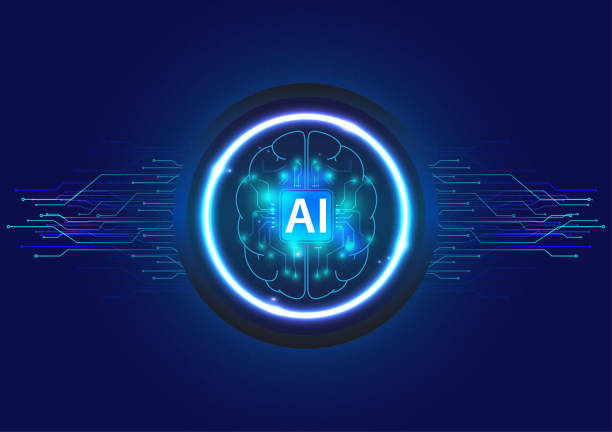
Advantages and Disadvantages of Using Smart Robots
The use of AI robots has many advantages, but also disadvantages that need to be considered.
Advantages
- Increased Productivity Robots can work continuously and without fatigue, which leads to increased productivity and reduced costs.
- Improved Quality Robots can perform tasks with higher accuracy and repeatability than humans, which leads to improved quality of products and services.
- Increased Safety Robots can perform tasks that are dangerous or difficult for humans, which leads to increased safety in the workplace.
- Cost Reduction In the long run, the use of robots can lead to cost reduction, as the need for human labor decreases.
Disadvantages
- High Initial Cost Purchasing and installing robots can incur high initial costs.
- Need for Expertise Maintaining and repairing robots requires specialized expertise and can be costly.
- Job Displacement Widespread use of robots can lead to job displacement for some individuals.
- Ethical Issues The use of AI robots raises new ethical issues, such as accountability for robot decisions and privacy concerns.
| Advantages | Disadvantages |
|---|---|
| Increased Productivity | High Initial Cost |
| Improved Quality | Need for Expertise |
| Increased Safety | Job Displacement |
| Cost Reduction | Ethical Issues |
The Role of AI Robots in Various Industries
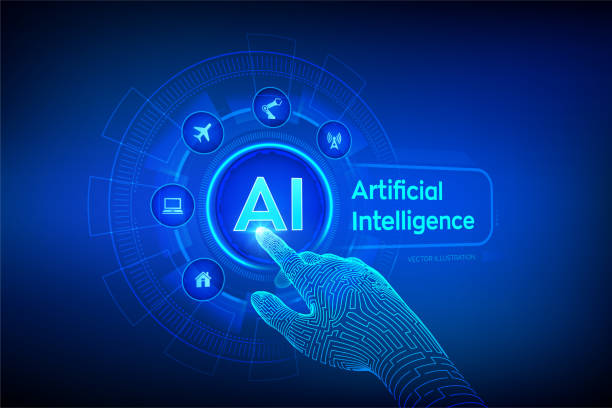
The Role of AI Robots in Various Industries
AI robots play a significant role in various industries and are reshaping many processes.
- Manufacturing Industrial robots are used in production lines for tasks such as welding, painting, packaging, and assembly.
They can work continuously and with high precision, which leads to increased productivity and reduced costs.
#AI robots in this industry can greatly assist the workforce. - Healthcare Medical robots are used in surgeries, rehabilitation, and patient care.
They can help surgeons perform more precise operations and help patients recover faster. - Agriculture Agricultural robots are used in farms for tasks such as planting, cultivating, and harvesting crops.
They can help farmers increase productivity and reduce costs.
AI robots in the agricultural industry will greatly assist in improving the production process. - Logistics Logistics robots are used in warehouses and distribution centers for moving goods and managing inventory.
They can help companies optimize their logistics processes and reduce costs. - Customer Service Chatbots and service robots are used in call centers and stores to provide customer service.
They can answer customer questions, process orders, and resolve issues.
These are just a few examples of the applications of AI robots in various industries.
With technological advancements, robots are expected to play an even more significant role in our lives.
Is your e-commerce site ready to attract maximum customers and increase sales? Rasawweb transforms your online business with modern and efficient e-commerce website designs.
✅ Increased speed and improved SEO
✅ Excellent user experience on mobile and desktop⚡ Get a free e-commerce website design consultation from Rasawweb now!
Challenges and Opportunities in the Development of Smart Robots
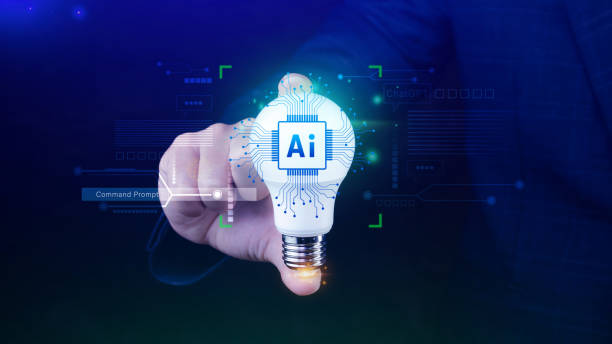
Challenges and Opportunities in the Development of Smart Robots
The development of smart robots faces many challenges and opportunities.
Challenges
- Ethical Issues The use of AI robots raises new ethical issues, such as accountability for robot decisions, privacy protection, and algorithmic bias.
- Security AI robots may be vulnerable to cyberattacks and misuse.
- Regulations There is a need to formulate new regulations to govern the use of AI robots.
- Public Acceptance Some individuals may show resistance to the use of AI robots.
Opportunities
- Economic Growth The development of smart robots can lead to economic growth and the creation of new jobs.
- Improved Quality of Life Smart robots can help improve the quality of human life, for example, by providing better medical services, improving transportation, and reducing pollution.
- Solving Global Problems Smart robots can help in solving global problems such as climate change, food shortages, and diseases.
To capitalize on opportunities and overcome challenges, cooperation between governments, industry, academia, and civil society is necessary.
What Will Be the Future of AI Robots?
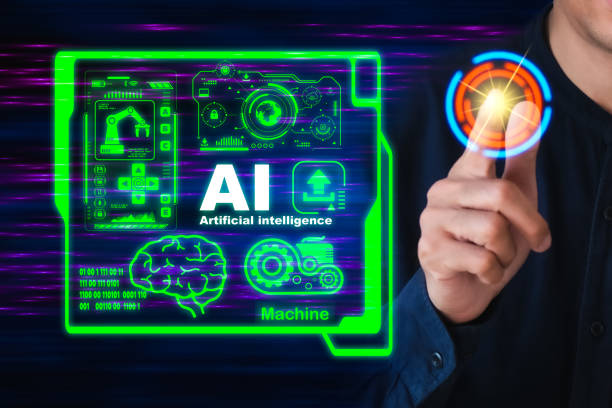
What Will Be the Future of AI Robots?
The future of AI robots looks very bright.
With technological advancements, robots are expected to become smarter, more efficient, and more versatile.
Some key trends in the development of AI robots include:
- Deep Learning The use of deep learning algorithms enables robots to learn from data and improve their performance.
- Machine Vision Advances in machine vision enable robots to better understand and interact with their surroundings.
- Natural Language Processing Advances in natural language processing enable robots to communicate more naturally with humans.
- Internet of Things Connecting robots to the Internet of Things allows them to communicate with other devices and share data.
In the future, robots are expected to play a more prominent role in our daily lives.
They can assist us at home, work, school, and in hospitals.
They can also help us in space exploration, scientific research, and solving global problems.
AI robots can facilitate tasks.
However, we must also pay attention to the ethical and security issues related to the use of AI robots and formulate appropriate regulations to govern their use.
Case Study of Successful AI Robots

Case Study of Successful AI Robots
Currently, successful AI robots exist in various industries, demonstrating the high potential of this technology.
- Baxter is an industrial robot designed to perform simple tasks in production lines.
Baxter is easily programmable and can work collaboratively with humans in a shared workspace. - Da Vinci Surgical System is a medical robot that helps surgeons perform more precise surgeries.
Da Vinci allows surgeons to access the patient’s body using small instruments and high-quality cameras. - Roomba is a cleaning robot that automatically cleans the floor.
Roomba uses its sensors to detect obstacles and avoid collisions. - Sophia is a humanoid robot designed to communicate with humans.
Sophia can speak, recognize emotions, and answer questions.
These are just a few examples of successful AI robots that currently exist.
With technological advancements, more smart robots are expected to be launched into the market and play a more prominent role in our lives. AI robots will have a very important role in the lives of future generations.
| Robot Name | Application |
|---|---|
| Baxter | Industrial |
| Da Vinci Surgical System | Medical |
| Roomba | Cleaning |
| Sophia | Communication |
How Smart Robots Learn and Are Trained

How Smart Robots Learn and Are Trained
Smart robots are trained using machine learning algorithms.
These algorithms enable robots to learn from data and improve their performance.
There are three main types of machine learning:
- Supervised Learning In this type of learning, the robot is trained using labeled data.
For example, to train an image recognition robot, it is shown images of various objects with their labels specified. - Unsupervised Learning In this type of learning, the robot is trained using unlabeled data.
The robot must find patterns and structures in the data.
For example, to train a clustering robot, it is given a dataset, and the robot must divide the data into clusters with similar characteristics. - Reinforcement Learning In this type of learning, the robot is trained using feedback from the environment.
The robot performs an action and then receives feedback indicating whether it performed well or not.
The robot uses this feedback to improve its performance.
In addition to machine learning algorithms, other methods are also used to train robots, such as manual programming and imitating human behavior.
AI robots continuously improve themselves through ongoing learning.
Research shows that 80% of customers trust companies with professional websites more. Does your current website inspire this trust?
With Rasawweb’s corporate website design services, permanently solve the problem of low customer trust and a weak online image!
✅ Create a professional image and increase customer trust
✅ Attract more sales leads and grow your business
⚡ Get a free consultation
Difference Between AI Robot and Automation
![]()
Difference Between AI Robot and Automation
Both AI robots and automation are used to automate tasks, but there are key differences between them.
Automation refers to the use of machines and software to perform tasks previously done by humans.
Automation is typically used for repetitive and routine tasks and does not require intelligence or flexibility.
For example, an automated production line in a factory is automation.
AI robots use artificial intelligence to perform tasks that typically require human intelligence, such as learning, reasoning, problem-solving, and language understanding.
AI robots can interact with their environment, make decisions, and perform tasks without the need for direct human intervention.
For example, a chatbot that answers customer questions is an AI robot.
In summary, automation is used for automating repetitive and routine tasks, while AI robots are used for automating tasks that require intelligence and flexibility.
AI robots are significantly more advanced than automation.
Important Tips for Selecting and Using Smart Robots
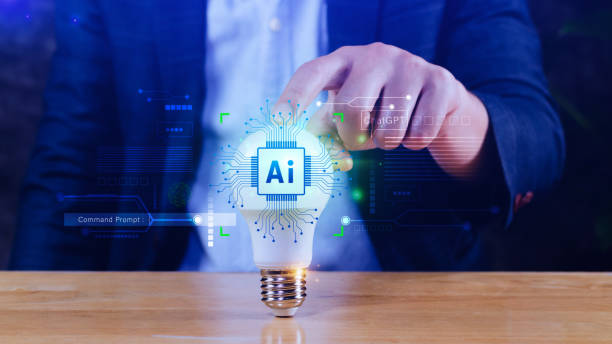
Important Tips for Selecting and Using Smart Robots
Choosing and using smart robots can be a complex process.
To get the best results, you need to pay attention to a few important points:
- Define Needs First and foremost, you must accurately define your needs.
What tasks do you want to automate? What are your expectations from the robot? - Research and Review Research different types of smart robots and examine their features, advantages, and disadvantages.
- Choose the Right Robot Select a robot that best matches your needs.
- Training and Maintenance Properly train operators and regularly maintain the robot.
- Ethical and Security Issues Pay attention to the ethical and security issues related to the use of smart robots.
By observing these tips, you can effectively use smart robots to increase productivity, reduce costs, and improve safety.
Proper use of AI robots can be beneficial.
Today, the application of smart robots with Artificial Intelligence is expanding.
The use of AI robots and machine learning can lead to an improved life and easier task completion.
Frequently Asked Questions
| Question | Answer |
|---|---|
| What is an AI robot? | It is a robot that uses artificial intelligence capabilities to understand its environment, reason, learn, and make decisions to perform complex tasks autonomously. |
| What is the main difference between a regular robot and an AI robot? | AI robots can learn and adapt to their environment, while regular robots typically operate based on fixed, predetermined programming. |
| In what fields are AI robots used? | In fields such as industry (production lines), medicine (robotic surgeries), services (customer support, smart vacuum cleaners), exploration (space and underwater), and entertainment. |
| How do AI robots learn? | They acquire new skills by analyzing large datasets and identifying patterns through machine learning and deep learning algorithms. |
| Can AI robots have emotions? | Currently, no. They can identify or simulate emotions, but they do not experience real emotions like humans. |
| What are the most important advantages of using AI robots? | Increased productivity, reduced human error, performance of dangerous or repetitive tasks, and provision of innovative and efficient services. |
| What challenges exist in the development of AI robots? | Need for abundant and high-quality data, algorithmic complexity, ethical issues, cybersecurity, and high research and development costs. |
| Are AI robots dangerous for humans? | No, with adherence to safe design principles and ethical regulations. Concerns are mostly related to social and economic impacts such as changes in the job market. |
| What is an example of an AI robot in daily life? | Smart vacuum cleaner robots (like Roomba) that automatically map and clean the house, or smart voice assistants (like Siri and Alexa). |
| How is the future of AI robots predicted? | They are expected to become smarter, more autonomous, and capable of more complex interactions with humans, playing a more significant role in industry, medicine, transportation, and daily life. |
And other advertising services from Rasa Web Advertising Agency:
- Smart UI/UX: A combination of creativity and technology to improve SEO ranking through custom programming.
- Smart Marketplace: Transform click-through rates with the help of custom programming.
- Smart Advertising Campaign: Professional optimization to increase website traffic using custom programming.
- Smart Brand Identity: Transform customer attraction with the help of user experience customization.
- Smart Social Media: Transform online growth with the help of user experience customization.
And more than a hundred other services in the field of internet advertising, advertising consultation, and organizational solutions.
Internet Advertising | Advertising Strategy | Advertorials
Resources
Comprehensive Guide to Artificial Intelligence on Digikala Mag
Robotics News on Zoomit
Artificial Intelligence on Persian Wikipedia
Practical Applications of Artificial Intelligence
? Is your business ready to leap into the digital world? Rasawweb Afarin Digital Marketing Agency paves your path to online success by providing comprehensive services including advanced e-commerce website design, professional SEO optimization, and effective social media strategies. Contact us for more information and expert consultation.
📍 Tehran, Mirdamad Street, next to Bank Markazi, Kazeroun Janoubi Alley, Ramin Alley, No. 6
